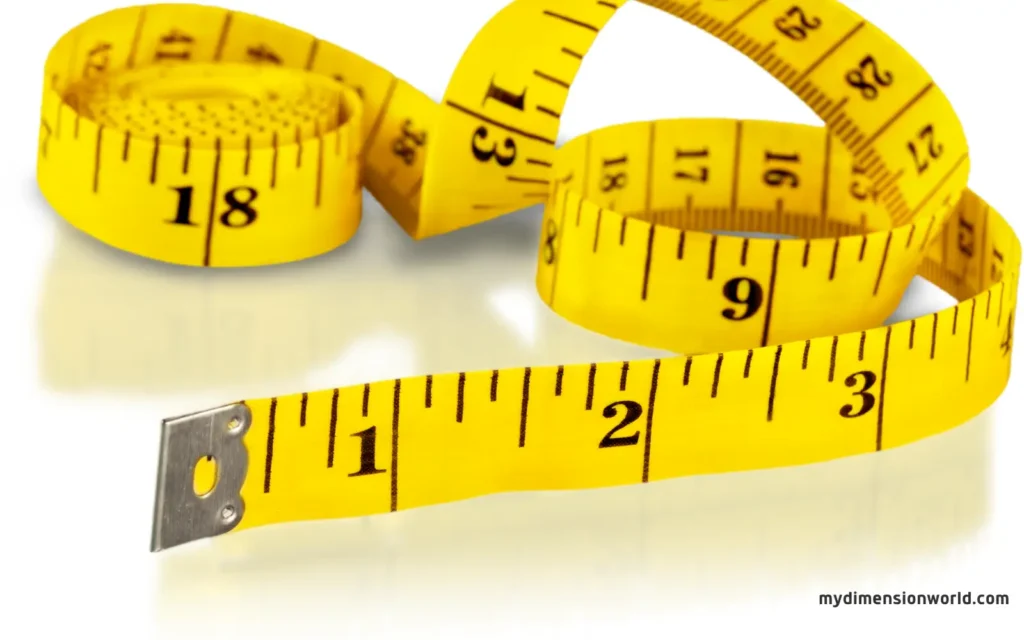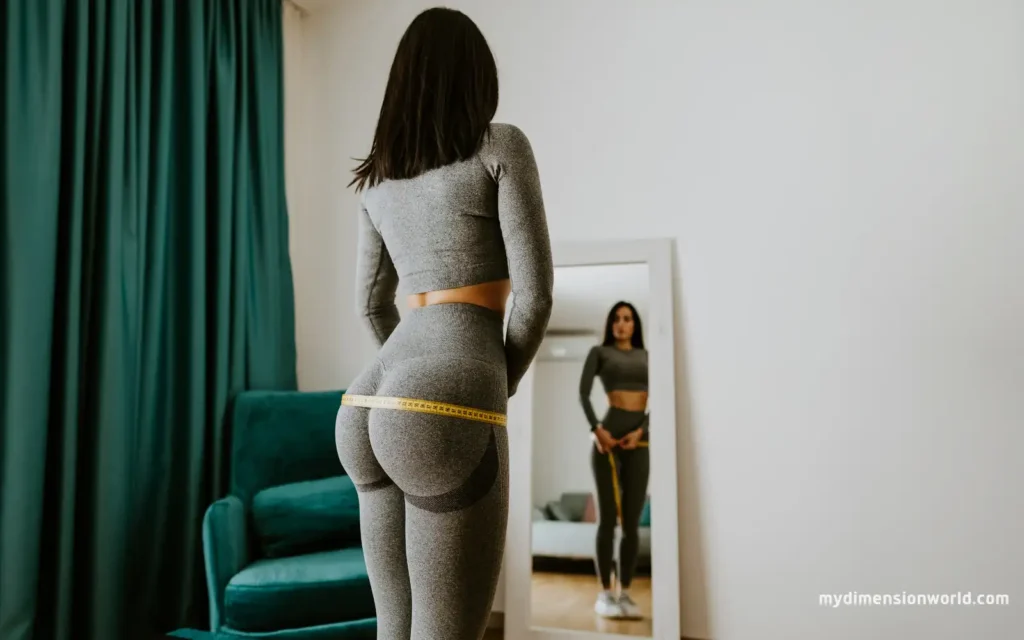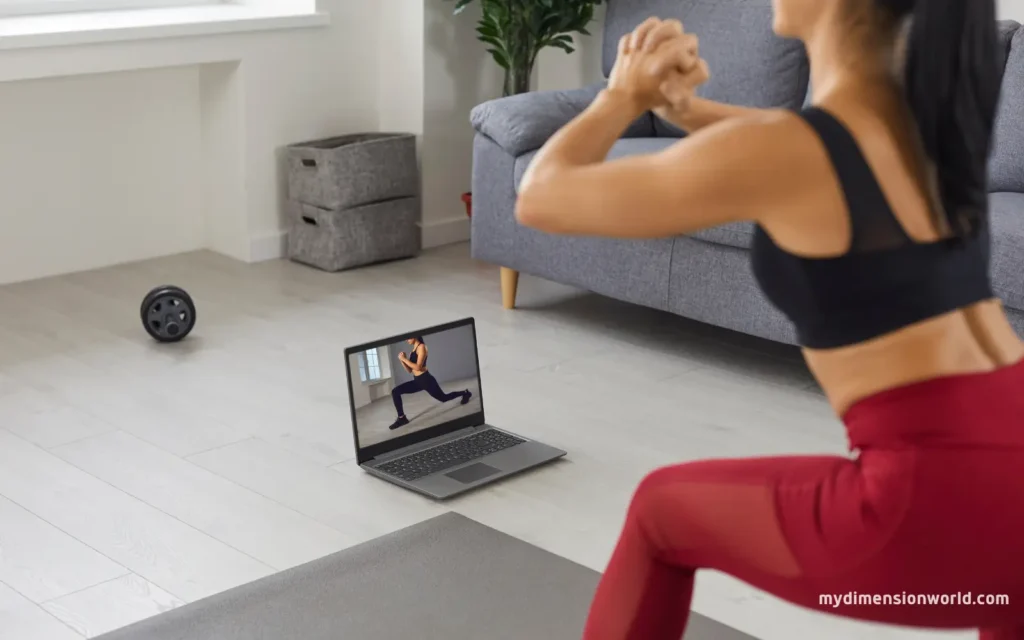Before we delve into the nitty-gritty details of measuring your leg length for pants, let’s first understand why it is crucial to do so.
Simply put, pants that do not fit correctly can be uncomfortable and unflattering.
They can make you look sloppy or disheveled, while a well-fitted pair of pants can make you look polished and confident.
Poorly fitting pants can also cause discomfort or pain if they are too long or short.
Materials Needed
1. Measuring tape

The measuring tape is the most important tool needed to measure leg length for pants accurately.
Use a soft, flexible measuring tape that can mold to the body’s curves for the most accurate results.
A metal measuring tape may need to be more flexible and allow for precise measurements.
Using a sewing measuring tape is recommended as it is flexible and easy to use.
2. Mirror or someone to assist with measurements

Having a mirror or someone who assists with measurements will ensure accurate results. Stand up straight with good posture while being measured, which can be challenging when working alone.
A mirror can help you see where you’re placing the measuring tape and ensure accuracy.
Alternatively, having someone else take the measurement will also aid in accuracy as they can adjust your posture and hold the measuring tape steady.
3. Pants to be measured

It may seem obvious, but the pants you wish to measure are on hand during this process.
Too long or short pants can cause discomfort or make your outfit appear sloppy.
Having the pants you plan on wearing measured beforehand will save you time and ensure that they fit perfectly every time you wear them.
Overall, these materials are Key in ensuring an accurate leg length measurement for pants.
Preparation
1. Remove Shoes and Socks

To properly measure leg length for pants, it’s essential to remove any shoes and socks you may be wearing. This will ensure that the measurements are accurate since shoes and socks can add to your height.
Inaccurate measurements can result in a poor-fitting pair of pants, which will only cause discomfort and may detract from your appearance.
2. Wear Form-Fitting Clothing or Underwear for Accurate Measurements

It’s also essential to wear form-fitting clothing or underwear when measuring your leg length for pants.
Loose clothing can affect the accuracy of the measurement, so it’s best to wear tight-fitting clothes that will stay put while measuring.
You don’t want any extra fabric or material affecting the length of your legs when getting measured. If your waistband is too loose or too tight, it can affect how high up on your body you’re holding the tape measure.
Measuring Process
The most important step to getting the right fit for your pants is to measure your leg length accurately. Follow these simple steps to get the perfect measurement:
1. Stand in front of a mirror or have someone assist with measurements.

Ensure that you are standing up straight and not slouching when taking measurements. If you can’t see yourself in a mirror, it’s best to have someone else take the measurements for you.
2. Measure from the crotch seam (where the inseam meets) down to the bottom hem of one leg.

The inseam is the length of fabric on the inside of your pants that runs from your crotch down to where your pant leg meets your foot.
To get an accurate measurement, start at this point and extend a measuring tape down to where you want your pant leg hemline to fall.
Make sure that the measuring tape is straight and not twisted or bent as you move it downwards.
3. Repeat on the other leg for consistency.

To confirm an even fit, repeat this process on both legs, even if one seems shorter than the other. This will help prevent any issues with uneven hemlines or discomfort caused by one pant leg is too long or too short.
4. Record both measurements.

Once you have measured both legs, record each measurement so that you remember them later on. It’s also helpful to write down which leg corresponds with each measurement (for example, left leg or right leg).
With these measurements in hand, you can now confidently shop for pants online or in-store, knowing exactly what size and length will work best for you!
Taking accurate measurements for pant length is a crucial step toward achieving a comfortable and stylish fit.
Tips and Tricks
Measure Twice, Average Your Measurements
To get the most accurate measurements for leg length, it is best practice to measure twice and average your measurements. This means measuring each leg twice, recording all four measurements, then adding them up and dividing by four to get an average. Doing so helps eliminate any measurement errors that may occur from human error or variations in posture.
Add an Extra Half Inch for Tailored Pants
If you measure for tailored pants, it is recommended to add an extra half inch to the recorded measurement.
This adds more room for movement and comfort when walking or sitting down. The added half-inch will ensure the pants stay tight enough and relaxed.
Consider Personal Preferences
If you plan on wearing high-top sneakers with pants, measure with them on to ensure a proper fit. Considering these factors will ensure that you get an accurate measurement that fits your specific needs.
Taking accurate measurements of your leg length can make all the difference when it comes to finding comfortable and stylish pants that fit correctly.
